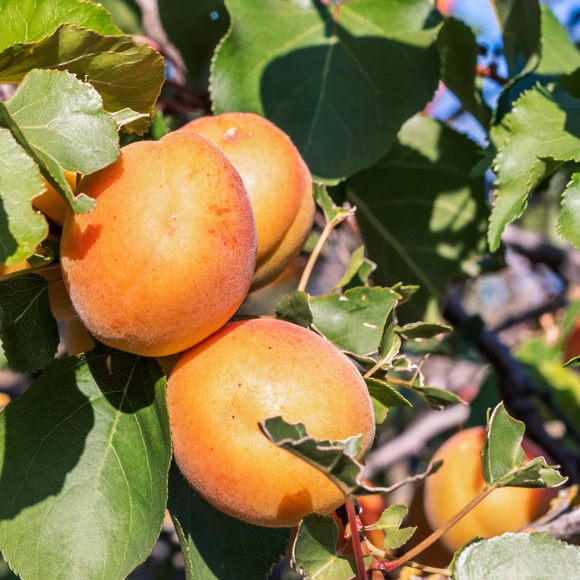Fruits & Vegetables
Blenheim Apricot
Snap judgments may spell trouble for what was once the king of California apricots.
North Americans may lose the Blenheim apricot to their own ludicrous standards for produce. These petite morsels, modest in blush and often mottled of skin, bruise if you look at them the wrong way. They also soften from the inside out, not only compelling farmers to pick those with a green tinge but concealing perfectly ripe fruit beneath a squeeze-check that says “not yet.” They are finicky and unremarkable-looking fruits in a world of dazzling, uniform produce.
Behind these “imperfections,” however, lays the sublime: One writer claims Blenheims are “the apricot that reminds you of what [the] fruit is supposed to taste like.” They neatly balance sweetness and acidity while carrying an aroma of honeysuckle. Prized for drying and canning, velvety Blenheims are perfectly delicious out of hand as well. What this varietal may lack in size, durability, and presentation is more than made up for in flavor.
These understated apricots once dominated the American produce aisle. When European fruit sources ran dry during World War I, U.S. demand for heretofore imported apricots skyrocketed—no easy task to resolve domestically for a fruit with highly specific soil needs and a short peak-harvest window. California’s Sacramento Valley proved a happy home for the picky fruit, blanketing the region by the end of the 1920s. However, with competition from dried Turkish apricots and the increased suburbanization of farmlands in the latter half of the 20th century, industry waned: 32,000 tons of Blenheims produced in 1988 dropped to 4,000 tons in 2007.
With their backs against the wall, Blenheims must now make their stand, at the farm-stand. Much to the dismay of East Coasters and middle America, the bruise-prone fruit travels poorly and turns quickly, discouraging Californian growers from shipping out of state. Thus, the arena of the Blenheim’s survival is limited to the Golden State, where a handful of farmers, purveyors, and restaurants are working to maintain this perfectly imperfect varietal.
Where to Try It
-
Flora Bella Farms Website
41849 North Fork Dr, Three Rivers, California, 93271, United StatesBe sure to check their social media accounts before visiting to confirm their apricots are available.
-
This farm often features Blenheims in the summer.
Written By
 lukefater
lukefater
Sources
- www.specialtyproduce.com/produce/Blenheim_Apricots_10834.php
- homeguides.sfgate.com/growing-zone-apricots-74629.html
- www.slowfoodusa.org/ark-item/blenheim-apricot
- www.californiabountiful.com/features/article.aspx?arID=127
- www.lamag.com/digestblog/farmers-market-report-blenheim-apricots-and-offbeat-berries/














